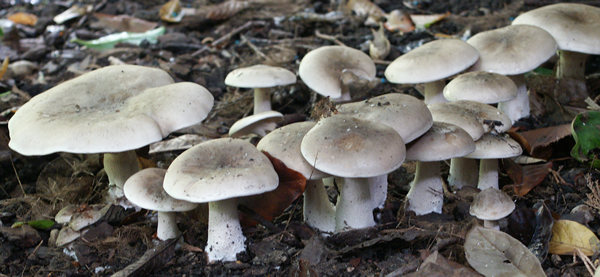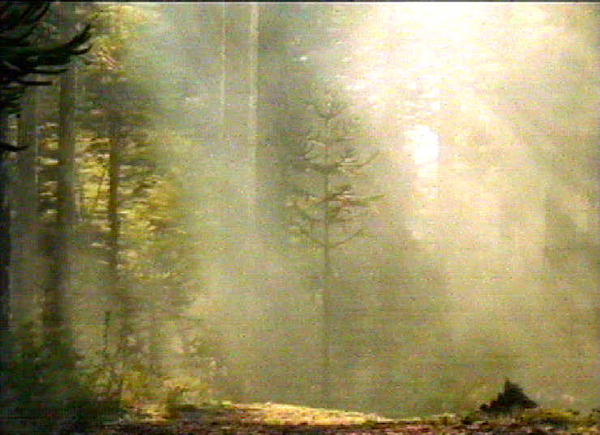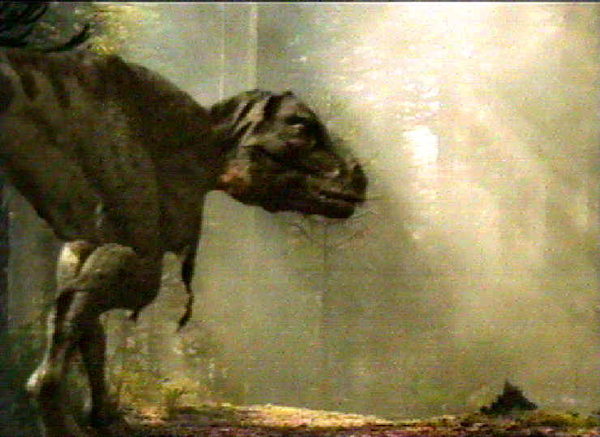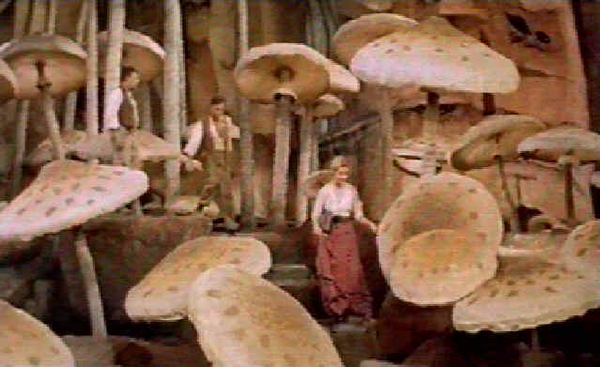1.1 How old is Kingdom fungi?
Ask about fungi and people think about fine specimens like these guys:
|
||
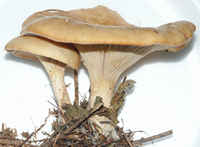 |
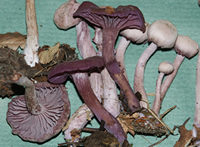 |
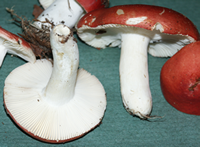 |
All photographs © David Moore 2011 |
||
Ask to what they are related and you'll probably find that some people think fungi are plants...others think they might be bacteria.
‘How many of you think that fungi are bacteria?’ is a question posed at a recent Summer School for year 10 pupils (4th year in secondary school, and about 16 years of age at the time), by one of the pupils who had attended a workshop session of ours. When all attendees (approximately 170 pupils) were asked 'Hands up all those who think fungi are plants', about 15 hands went up, but when asked 'Hands up all those who think fungi are bacteria', at least 150 hands went up!
As teachers we are used to battling against the mistaken idea that fungi are plants, but it was a shock to find that so many pupils believe that fungi are bacteria so close to the end of their statutory education. After all, it’s a bigger error than for them to think that whales are fish; at least whales and fish are in the same biological Kingdom. Does such ignorance matter? We say it does. The practical reason it matters is because the activities of fungi are crucially important in our every day lives. The educational reason it matters is that fungi form what is arguably the largest kingdom of higher organisms on the planet. Ignorance of this kingdom is a major blot on our personal education.
Fungi are not bacteria, because fungi are eukaryotes and they have the complex cell structures and abilities to make tissues and organs that we expect of higher organisms.
 |
| One view of the most ancient relationships of the major lineages of the domains of life, redrawn from the Tree of Life Project (http://tolweb.org/Life_on_Earth/1/1997.01.01 in the Tree of Life Project, http://tolweb.org/). There are two kingdoms within the Archaea: the Euryarcheota composed of methanogens and extreme halophiles, and the Crenarcheota composed of the extreme thermophiles. Eocytes are a group of sulfur-dependent bacteria with a unique pattern of organisation of ribosomal large and small subunits. They are closely related to eukaryotes. |
Unfortunately, even though fungi make up such a large group of higher organisms, most current biology teaching, from school level upwards, concentrates on animals, with a trickle of information about plants. The result is that the majority of school and college students (and, since they’ve been through the same system, current University academics) are ignorant of fungal biology and therefore of their own dependence on fungi in everyday life. This institutional ignorance about fungi, generated by the lack of an appropriate treatment of fungal biology in national school curricula, seems to apply throughout Europe, North and South America and Australasia; indeed, most of the world.
So we have to SHOUT it … NO, they’re NOT plants and they're NOT bacteria!
There are three major Kingdoms of eukaryotes: Kingdom Fungi, Kingdom Viridiplantae (all green plants), and Kingdom Animalia (all multicellular animals). Various eukaryotic microbes (like protozoa, diatoms, water moulds, ciliates, red algae, brown algae and dinoflagellates) are placed in a number of sister kngdoms.
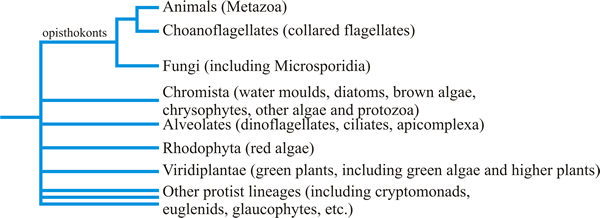 |
| A cladogram (phylogenetic tree) showing the relationships of the eukaryotes. Note that the top branch of this tree shows the opisthokont clade as distinct from the other eukaryotic clades. The opisthokont clade subsequently diverges into animals and fungi as sister clades. Adapted from the Tree of Life Project [http://tolweb.org/Eukaryotes]. |
"...This classification scheme...requires changes in social organization of biologists, many of whom as botanists and zoologists, still behave as if there were only two important kingdoms (plants and animals)..." [Margulis, L. (1992). Biodiversity - molecular biological domains, symbiosis and Kingdom origins. BioSystems, 27: 39-51].
"... animals and fungi are sister groups while plants constitute an independent evolutionary lineage..." [Baldauf, S. L. & Palmer, J. D. (1993). Animals and fungi are each others closest relatives - congruent evidence from multiple proteins. Proceedings of the National Academy of Sciences of the U. S. A., 90: 11558-11562].
Fungi are fungi!
 |
| The main branches of the tree of life for Kingdom Fungi, derived from combined data for six genes (a total number of 6436 aligned nucleotides) of 199 fungi (James et al., 2006). All the traditional phyla are represented: Ascomycota, Basidiomycota, Glomeromycota, Zygomycota and Chytridiomycota (see discussion in Moore, Robson & Trinci, 2011). Ascomycota and Basidiomycota are united as the Dikarya, fungi in which at least part of the life cycle is characterised by cells with paired nuclei. The closest relatives of these two sister goups are the Glomeromycota. Neither the Zygomycota nor the Chytridiomycota are monophyletic groups; they have representatives in different clades or branches of the tree that are grouped into those phyla by their shared primitive morphologies (such groups are called paraphyletic). Note the Microsporidia and Rozella branches, which come out as basal to all other fungi in this analysis. Redrawn after Bruns (2006)(and see Taylor, 2011). |
There is still uncertainty in the exact sequence of divergence of the major kingdoms, probably because of:
- variable rates of evolution between the different groups examined, and
- variable rates of evolution between the different molecules analysed.
But we can put an approximate timescale on the emergence of the major domains in deep time:
| 3.5 billion years ago | There is evidence for the activity of living organisms in terrestrial rocks that are 3.5 × 109 years old. |
| 2 billion years ago | Eukaryotes and eubacteria last shared a common ancestor about 2 × 109 years ago. |
| 1 billion years ago | Eukaryotic kingdoms diverged from one another about 1 × 109 years ago. |
| [Doolittle, R. F., Feng, D. F., Tsang, S., Cho, G. & Little, E. (1996). Determining divergence times of the major kingdoms of living organisms with a protein clock. Science, 271: 470-477.] | |
So fungi are fungi! … and they have been distinct from their sister eukaryotes for a thousand million years!
These conclusions are arrived at using molecular phylogenetics, but there is fossil evidence, too. Remains of two mushrooms have been found in amber which is 90 to 94 million years old.
They bear a strong resemblance to the existing genera Marasmius and Marasmiellus yet when they were preserved the dinosaurs still ruled the Earth … [Hibbett, D. S., Grimaldi, D. & Donoghue, M. J. (1995). Cretaceous mushrooms in amber. Nature, 377: 487.]
…so the mushrooms YOU see when you trek through the forest ...
Videostill from The Making of Walking With Dinosaurs © BBC 1999 |
…are almost identical to those seen by dinosaurs in their forests.
Videostill from The Making of Walking With Dinosaurs © BBC 1999 |
‘...evidence accumulates to support the long-held view that the history of fungi is not marked by change and extinctions but by conservatism and continuity…’ [Pirozynski, K. A. (1976). Fungal spores in fossil record. Biological Memoirs, 1: 104-120.]
In other words: if it works, don't fix it!
Here's an interesting image from an expedition to a far off place...
Videostill from Journey to the Center of the Earth, a Twentieth Century-Fox production |
Could this be a Macrolepiota - known in England as the Field Parasol mushroom? My field guide describes Macrolepiota procera as a "Large distinctive pale brownish agaric with scaly cap; white gills, and pale grey-brown stem with ring, and with banded markings."
Which all seems to fit, except ...
... it doesn’t say anything about the mushroom being two to three METRES tall!
Of course, it’s all fiction!

Or is it? …
On July 31, 2000, at breakfast overlooking the Andaman Sea, I opened The Bangkok Post (as you do in that part of the world) to find this:
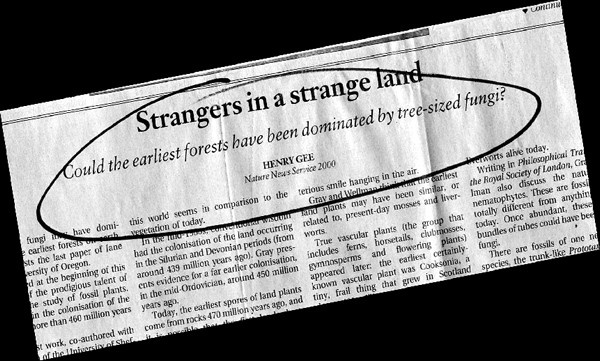
A press cutting asking "Could the earliest forests have been dominated by tree-sized fungi?"
Well, The Bangkok Post (with all due respect) is not considered to be a front-line research journal by many people, so how about a reference to the Philosophical Transactions of the Royal Society of London? ...
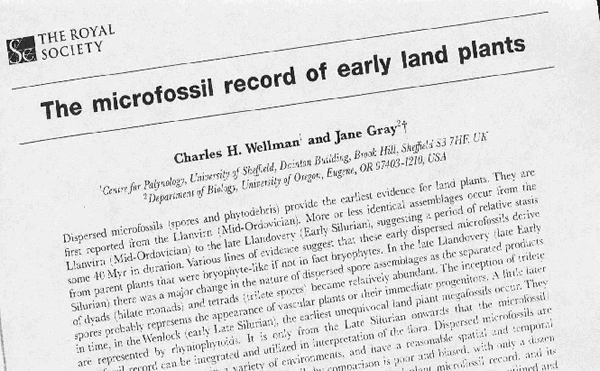
Quote: ‘…It has been suggested that some of the nematophytes (Prototaxites) were terrestrial fungi… (specimens of Prototaxites over 1 m wide have been reported)…’ [Wellman, C. H. & Gray, J. (2000). The microfossil record of early land plants. Philosophical Transactions of the Royal Society of London, Series B 355, 717-732.]
Now, nematophyte fossils start in rocks more than 450 million years old. They are fossilized tubular things (maybe fungal hyphae?) and are so common and widespread that they must have been an important, even dominant, element both in terms of abundance and diversity in terrestrial ecosystems. They are found in rocks dating from the Ordovician to the early Devonian periods. This covers the best part of 100 million years. Nematophytes also included by far the largest organisms of early terrestrial ecosystems.
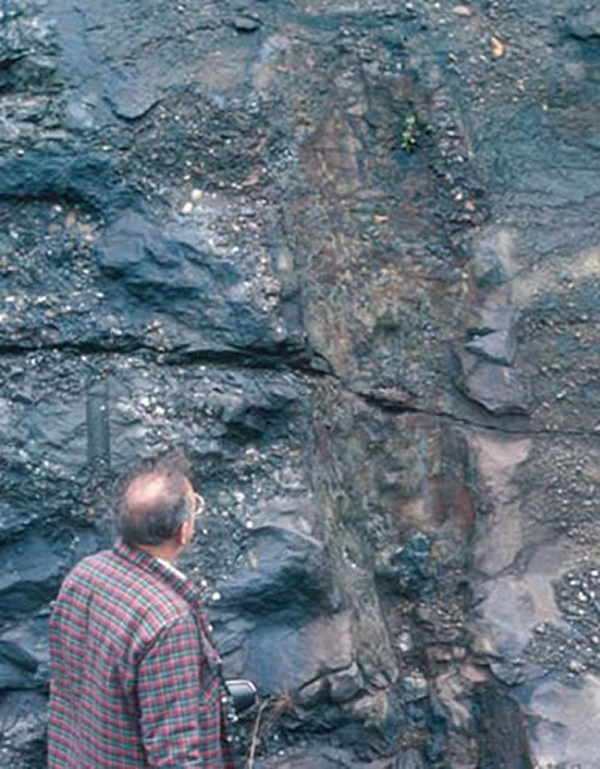 |
| A Lower Devonian Prototaxites compression fossil, at least 2 m tall, in situ in the Bordeaux Quarry, Quebec. Dr Francis Hueber, who first made the suggestion that Prototaxites fossils are fungal in origin (Hueber, 2001), is posing alongside as a scale marker. Photograph kindly supplied by Dr Carol Hotton of the Smithsonian Institution, appears as Fig 1A in Boyce et al., 2007. |
Remember the quotation - "specimens of Prototaxites over 1 m wide have been reported…"? One metre across? Well, maybe, just maybe, the landscape of over 400 million years ago was dominated by giant fungi. Not by mushrooms as suggested in the classic science fiction films,
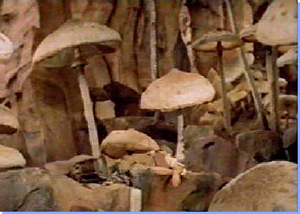 |
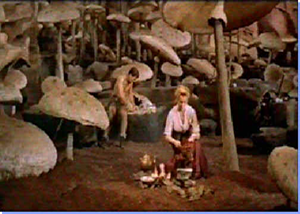 |
| Videostills from Journey to the Center of the Earth, a Twentieth Century-Fox production | |
...but by giant club fungi:
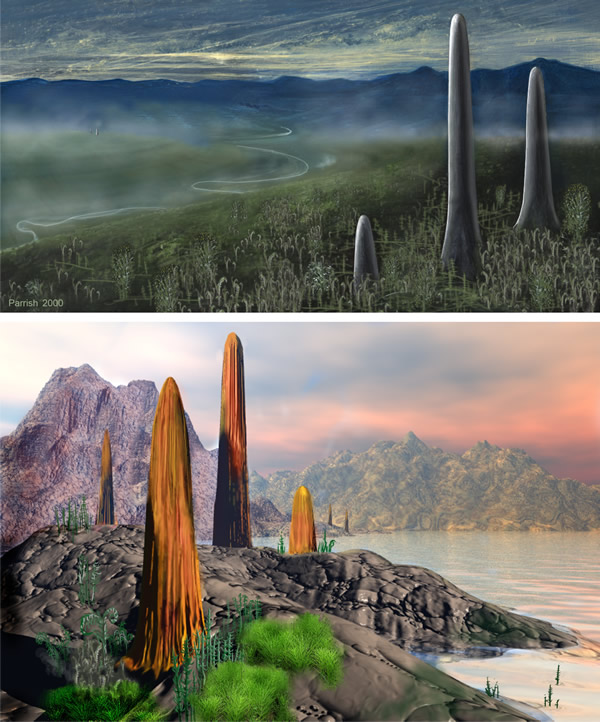 |
|---|
Two artistic impressions of the Lower Devonian landscape of some 400 million years ago, dominated by specimens of Prototaxites up to 9 metres tall. Top is a painting by Mary Parrish of the Smithsonian Institution, Washington, which was prepared for the publication about Prototaxites fossils by Hueber (2001). At bottom is a painting by Geoffrey Kibby that appeared under the title ‘an artist's impression of the landscape of the Devonian period’ as a rear cover image on the magazine Field Mycology in April 2008. In the landscape portrayed in these paintings the fungus Prototaxites dominates as the largest terrestrial organism to have lived up to this point in time. Although vascular plants were already present at this time, these landscapes were still dependent on the more ancient primary producers: cyanobacteria (blue-green algae), eukaryotic algae, lichens and mosses, liverworts and their bryophyte relatives. What you are seeing here is the physical expression of the dominance of fungi in the Earth’s biosphere. This physical dominance of Prototaxites lasted at least 40 million years (about 20 times longer than the genus Homo has so far existed on Earth). Images kindly supplied by Tom Jorstad of the Smithsonian Institution and Geoffrey Kibby, senior editor of Field Mycology. The painting by Mary Parrish courtesy of and © Smithsonian Institution. Reproduced with permission from Elsevier. |
Don't underestimate fungi! Today, fungi comprise the most crucial Kingdom of eukaryotic organisms on the planet that exists everywhere on planet Earth. And they have dominated the biosphere of Earth for a large fraction of its history.
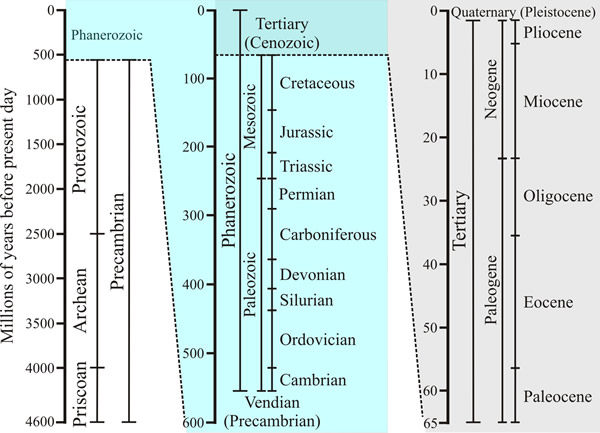 |
|---|
| The geological timescale. The figure shows how the entire span of time during which the Earth has existed is classified into eras and epochs. Time axes on the central and right-hand panels are magnified views of the upper section of the previous panel. The last 65 million years is called the Cenozoic era, and is divided into a number of epochs, which began with the Paleocene approximately 65 million years ago, and runs to the present day. The Paleocene, which lasted from 65 to 54 million years ago, is followed by the Eocene (54-34 million years ago), the Oligocene (34-24 million years ago), the Miocene (24-5 million years ago), the Pliocene (5-1.8 million years ago) and the Pleistocene or Ice Ages (1.8 million years ago to 10 000 years ago). The period since the last retreat of the glaciers and present glacial warming is called the Holocene, or Recent (10 000 years ago to present day). Source: http://www.geo.ucalgary.ca/~macrae/timescale/timescale.html. |
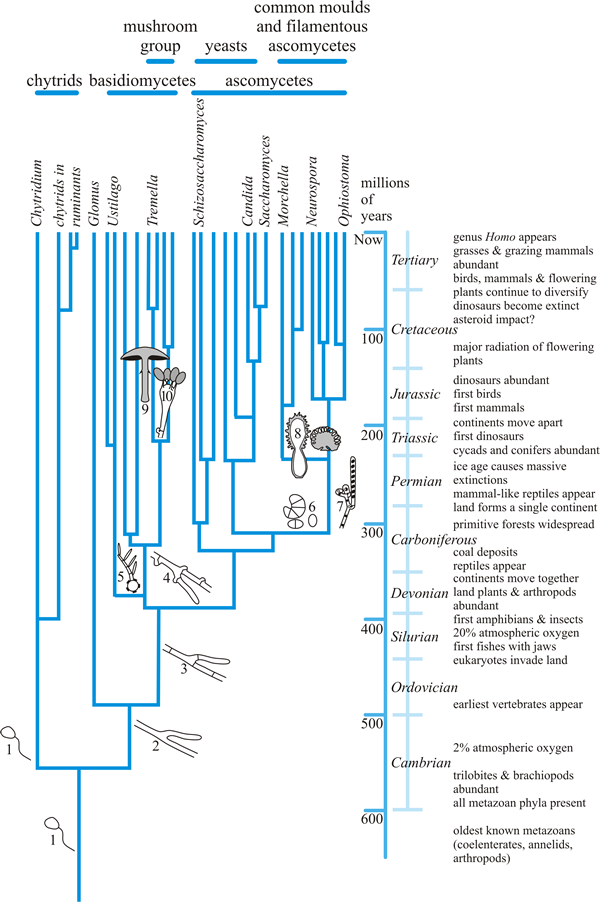 |
| This is a cladogram showing phylogeny of the true fungi based on the 18S rDNA gene sequence. Branch lengths in the cladogram are proportional to the average rate of nucleotide substitution (1% per 100 million years), so the cladogram becomes an evolutionary tree, which has been calibrated using fossil fungi, fungal hosts and/or symbionts. The geological time timescale on the right shows the context of other major evolutionary events in geological time. The numerals and cartoons on the cladogram illustrate major milestones of fungal morphological evolution: terrestrial higher fungi diverged from water moulds (1) as branching filaments without septa (2) about 550 million years ago (Mya); the Glomeromycota diverged from the progenitor of ascomycetes and basidiomycetes about 490 Mya, and the latter lineage evolved septate filaments (3); clamp connections mark early basidiomycetes (4); basidia (smut-like, 5), asexual spores (6) and asci (7) probably evolved early in the major radiations of basidiomycetes and ascomycetes; filamentous ascomycetes diverged from the yeast lineage about 310 Mya, and fruiting bodies (8) presumably evolved before the Permian divergences because they are present in all the lineages today; mushroom fungi (9), with their characteristic holobasidium (10) probably radiated 200-130 Mya, soon after flowering plants became an important part of the flora. It’s interesting that coals deposited in the Cretaceous and Tertiary periods show much more evidence of fungal decay than the much older Carboniferous coals, reflecting the radiation of aggressive wood-decay basidiomycetes from the Triassic onwards. Also note the relatively recent radiation of (anaerobic) chytrids as grasses and grazing mammals became more abundant (see discussion in Moore, Robson & Trinci, 2011). |
For the full story you need to read Fungal Biology in the Origin and Emergence of Life, written by David Moore (Published March 2013; ISBN-13: 9781107652774). This book examines the progress of life, as we understand it.
Starting from the origin of the solar system, the book deals with the origin of life and its onward evolution. And all in a form accessible to the general reader. In a very real sense, the book is a tourist guide, taking its readers on a series of Deep Time excursions.
Updated December 7, 2016

